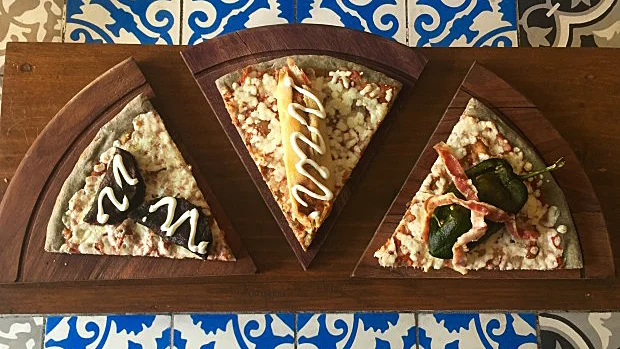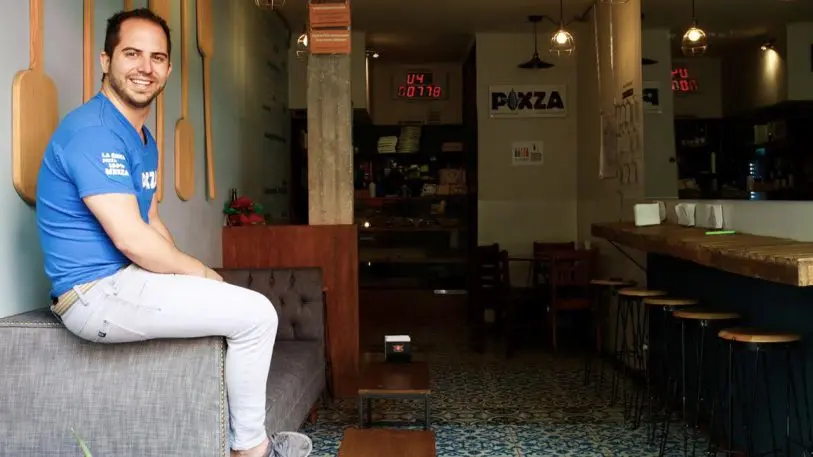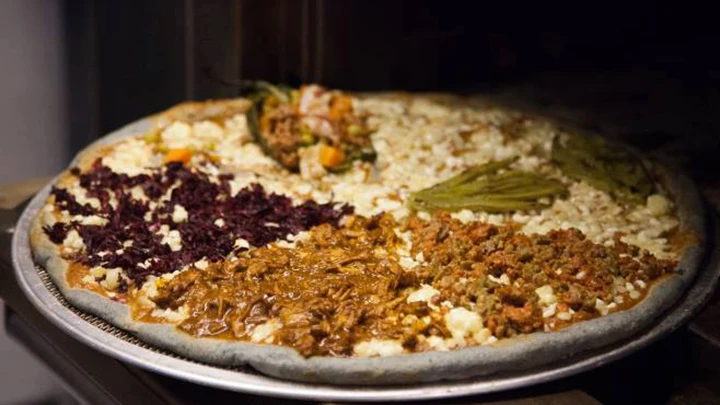Before launching Pixza, which he describes as “a social empowerment platform disguised as a pizzeria,” two years ago, Alejandro Souza graduated college and founded a joint business and language training institute in Rwanda. He traveled to Uganda to develop a system by which peanut farmers could increase both yield and revenue; later on, he helped the Bhutanese Ministry of Education develop a way to measure the baseline well-being of the country’s youth. As a consultant for the Inter-American Development Bank in Brazil, he helped pilot a project in the slums of Rio de Janeiro that used sports as a vehicle to promote education, conflict resolution skills, and health.
Though he landed in New York to pursue his masters in public administration and development at Columbia University, Souza’s up-front experience with global need got him thinking about his home country of Mexico. In Mexico City, around 50% of people live in informal, low-income settlements; in 2012, it was estimated that between 15,000 and 30,000 people, including youth, were living on the streets.

But for Souza, “everything I do has a social element,” he tells Fast Company. It wasn’t enough to come up with a new way of making pizza; he wanted to find a way to translate that idea into an avenue to help the youth struggling to even access food in his home city. “I thought if I opened a restaurant, I could employ kids that fall into this category of ‘social abandonment’–kids that are between ages 18 and 25, who have a combination of these five characteristics: They’ve spent time on the streets, they were addicted to drugs, they were abandoned by their families at an early age, they have no formal education,” Souza says. Those factors make finding employment difficult, but he felt that if he could reach them and offer job training in a restaurant, he could help break the cycle of poverty.

For every five slices of blue corn pizza sold in the shop, a piece of paper denoting a sixth slice is set aside. Once a week, those slips are counted up, and the corresponding number of slices are made and brought to a nearby homeless shelter, where Pixza representatives–many of them who once lived in the shelter–distribute them to the youth and have a conversation about Pixza’s program, and how it could lead to a job offer at the pizzeria.
Called “the root of change,” the program begins with youths identifying and carrying out a volunteer opportunity in their community. That could be, Souza says, as simple as offering their slice of pizza to someone else, or something more complex, like organizing a clothing drive. The second step, essentially, is a repeat of the first, but the initiative has to be more complex. Volunteering, Souza says, is essential to the program because “it changes the kids’ mind-set in terms of being willing and able to both give and receive help.”
Next, the youth are set up with a haircut, a shower, a T-shirt, a doctor’s appointment, and a life-skills course; Souza has set up partnerships with local hairdressers, medical students, and doctors who volunteer their services to the program. When the youth make it through all of the steps–their progress is recorded via a bracelet in which each step is hole-punched as it’s completed, like an analogue Fitbit–they are offered a job at Pixza.

Once employed at Pixza, the youth are matched up with a dedicated coach, who walks them through life planning and securing necessities like housing. Drawing on the people that helped enable his own success, Souza has tapped into his network to find mentors, who include his mother and many of her friends. The youth and mentors meet at Pixza during closing hours to plan: how to use the two-month stipend doled out to the kids to help them secure an apartment, how to source furniture, how they might want to direct their career beyond the pizzeria.
None of the funding for Pixza’s “route of change” program is external; the blue corn slices finance all of the initiatives. If one of the youths employed by the pizzeria is in need of some extra money to help them in their transition from the shelter–a piece of furniture, or funding to take a class–they’ll concoct a new slice with a unique array of toppings, the proceeds from which will go toward whatever the kid needs. “People come in and buy the slice, knowing it’ll help that kid directly,” Souza says.
The give-back element is proving to be good business for Souza, too. Pixza broke even after its fourth month of operation, has since opened up a second location, and this year Souza was awarded the grand prize at the annual NextGen in Franchising Global Competition in Las Vegas. “Our best client is the one that believes in our product and in our mission, but we don’t even give people the opportunity to believe or not believe in what we’re doing,” Souza says. “If they buy a slice, they’re supporting it.”
Recognize your brand’s excellence by applying to this year’s Brands That Matter Awards before the early-rate deadline, May 3.
